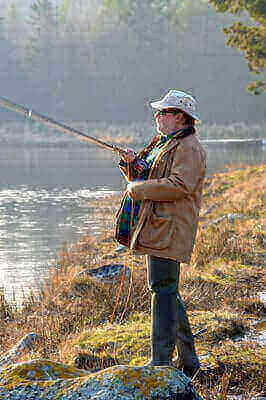Disclosure: We may earn commissions if you purchase products after clicking on a link from our site.
Do you fish from the banks of rivers and ponds? Would you like to learn how to catch more fish from the shore? Bank fishing has many benefits like accessing hard-to-reach and less-fished areas. Additionally, you can easily access shallow areas that a boat won’t access.
Moreover, you don’t have to be concerned about the sound of the boat’s motor. In this article, we share bank fishing tips to help you be more successful in fishing from the banks of streams, creeks, lakes, ponds, and rivers.
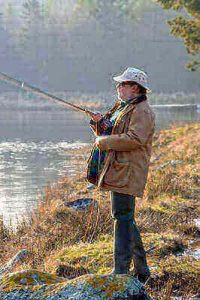
Bank Fishing Tips
1. Do a little research to find out the kinds of fish in the river, what they feed on, and the types of structures in the water. Is it shallow, deep, or both? Does it have shaded areas? And what is the contour of the land underwater?
Talk to other anglers or the people at the local fishing supplies store. Additionally, talk to the people at the fisheries department at the local conservation office. They will provide most of the information you need.
2. You can do more research before going to the river by using Google Earth to locate features and structures of the water like drop-offs, access, humps, rock bars, and points. You can acquire a lot of information from Google Earth or another satellite imaging source that can’t easily be seen at ground level.
3. Most fish have better eyesight than we give them credit for. They can pick out bright and lousy colors easily on the banks. This will alert them and cause them to leave the banks of rivers. It is always advisable to wear dark-colored clothes or camouflage clothing that will blend easily with the environment around the bank of the river.
4. Always be mindful of your movement along the banks of a river. Fish picks up vibrations from the banks and this can get them spooked. Move lightly and slowly as you approach the banks. Additionally, loud music or conversations should also be avoided. Be quiet and avoid a lot of motions while bank fishing. This is one of the best bank fishing tips to remember.
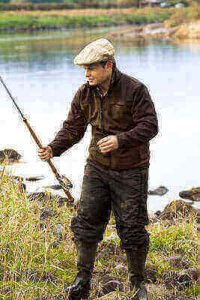
5. If you see fish while bank fishing, don’t cast right at the fish. Casting at the fish will spook it. Instead, cast a little distance in front of it so they see it but do not get spooked.
6. When fishing in a stream or river, cast the bait upstream and let the current carry it to the fish. When the line passes you, start slowly reeling it in. Don’t delay to start reeling it in or your line could get caught up with rocks or other objects along the bank.
7. When you walk along the banks of rivers, walk lightly as there are often frogs and insects on the banks that will jump into the water as you approach them. This action by frogs and insects will get the attention of fish and may alert them that danger is near which caused the frogs and insects to jump into the water.
8. As you fish from the banks of rivers, always try to keep track of your gear. The vegetation and other objects can easily hide your gear.
9. Look for areas with a cover like hanging trees, docks, under boats, etc. Fish love cover for protection as well as ambush areas.
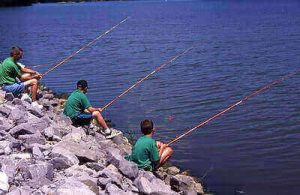
10. Look for shaded areas and areas the wind is sweeping. Fish seek cover also for protection from the sun. Observe the direction in which the wind is blowing. Look in the corner of the pond where the wind is sweeping. The wind will send small fish and other prey into the corner it is sweeping. This will also have fish there as they go in search of food.
11. When you are reeling in your bait, the bottom topography that the bait is moving over will get shallower. If the bait is heavy like a spoon, you will have to reel the bait faster to avoid hooking the bottom.
12. Do not cast your bait directly in front of you. When you reel in your bait, you will only be fishing each strike zone or depth for a very short period. Instead, cast your bait at a 45-degree angle. This will allow the bait to linger at each water depth for a longer period of time thereby increasing your chances of catching fish.
13. Bridges provide shade and cover that attracts fish. Fish off and under bridges for fish as they are always attracted to structures that shade and cover.
14. When you fish the banks of rivers, always take a net with you. Using a net can prevent you from losing fish on the banks, especially banks with thick vegetation.
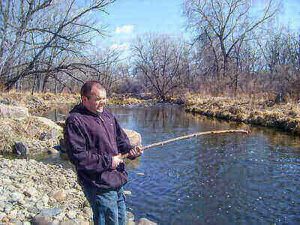
15. When bank fishing, it is always best to stay a few feet away from the edge of the bank and fish the cover closest to you first. There is always the chance that fish is right off the bank. Always make your first cast before you get to the water’s edge. Try to land the bait softly.
16. Always fish parallel to the bank of the river. This can lure fish into biting.
17. When bank fishing, it is a good practice to take along a few pieces of fishing gear as you would need. You have to be mobile while working the banks and too much gear will not make that possible. One or two rods, a backpack, and your lures. You will have a better chance of catching more fish with less gear to contend with.
18. During the summer, pay attention to the wind-blown side of the pond, river, or lake. Prey fish, crustaceans, plankton, and other living things will be swept in by the winds. Fish will navigate to those wind-blown areas in search of food.
19. In the winter, the sun will be shone directly on the north bank. This will warm up rip-rap and gravel banks. The warmer water will attract fish and bait fish. You will have better chances on the north shore or the calm side of the river during winter.
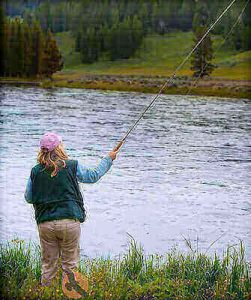
20. The two best baits to tie to two rods for bank fishing are a search bait and a follow-up soft plastic bait. Search baits include topwater, crankbaits, spinnerbait, chatterbait, jerk baits, swimbaits, and ned-rigs. Follow-up baits are jigs, stick baits, ned-rigs, and Texas-rigged soft plastics.
21. Practice casting at home. Learning to cast to areas that other people can’t access will improve your chances of catching fish from the banks.
22. Always try different techniques when bank fishing. Try a different bait to give you an advantage with a bait not seen in that area. Use a jerk bait instead of a Senko or use a 10-inch worm for a 6-inch one.
23. Take advantage of weather conditions to improve your chances of catching fish when you fish from the bank. During warmer weather, fish will move to shallow areas to feed in the mornings and evenings. By fishing in the mornings and evenings, you will have better chances Similarly, on cloudy days, the feeding times of the fish will be extended and might improve the bite.
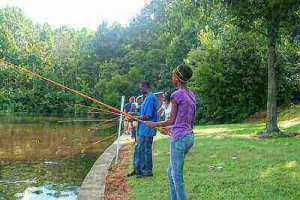
24. Fish tend to feed more when there is less activity and the water is calmer. As a result, night fishing from the bank can also prove to be very rewarding.
25. For color options of fishing lures, it is best to keep it natural and simple. Black, blue, white shad, and green pumpkin are some of the best colors for fishing lures.
26. Study the shoreline as it will reveal a lot of helpful information. Pay attention to the color of the water. Observe the pitch and make-up of the bottom. Does the shoreline make up or does the slope change as you look down the bank? Look for weeds, rocks, and other covers that might host fish and baitfish.
27. When bank fishing, it is best to be moving along the bank. Don’t just stand at one spot and keep casting and waiting for a bite. If you haven’t got any bite for a period of time, you should move slowly to other areas and cast. This is one of the reasons to not take along a lot of gear and also carry a backpack that can store your fishing items.
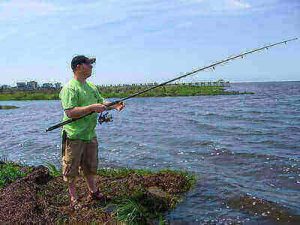
28. Use topwater lures as they stay on top of the water. This allows you to fish the area efficiently and avoid snags.
The Bottom Line
Bank fishing tips will help you catch more fish from the banks of ponds, rivers, and lakes. Bank fishing allows you to catch fish without the need for a boat. You can get good at it and catch as many fish as someone who has a boat. In this article, we share some bank fishing tips to help you be more successful and catch more fish from the shores.
Whether you are just a beginner at bank fishing or have been fishing from the banks of rivers for many years, we hope you can find some bank fishing tips here to put into practice. If you also fish for saugers, then this article on sauger fishing tips will help you catch more saugers. Muskie fishing tips for beginners also help you become more successful in fishing for muskies.
